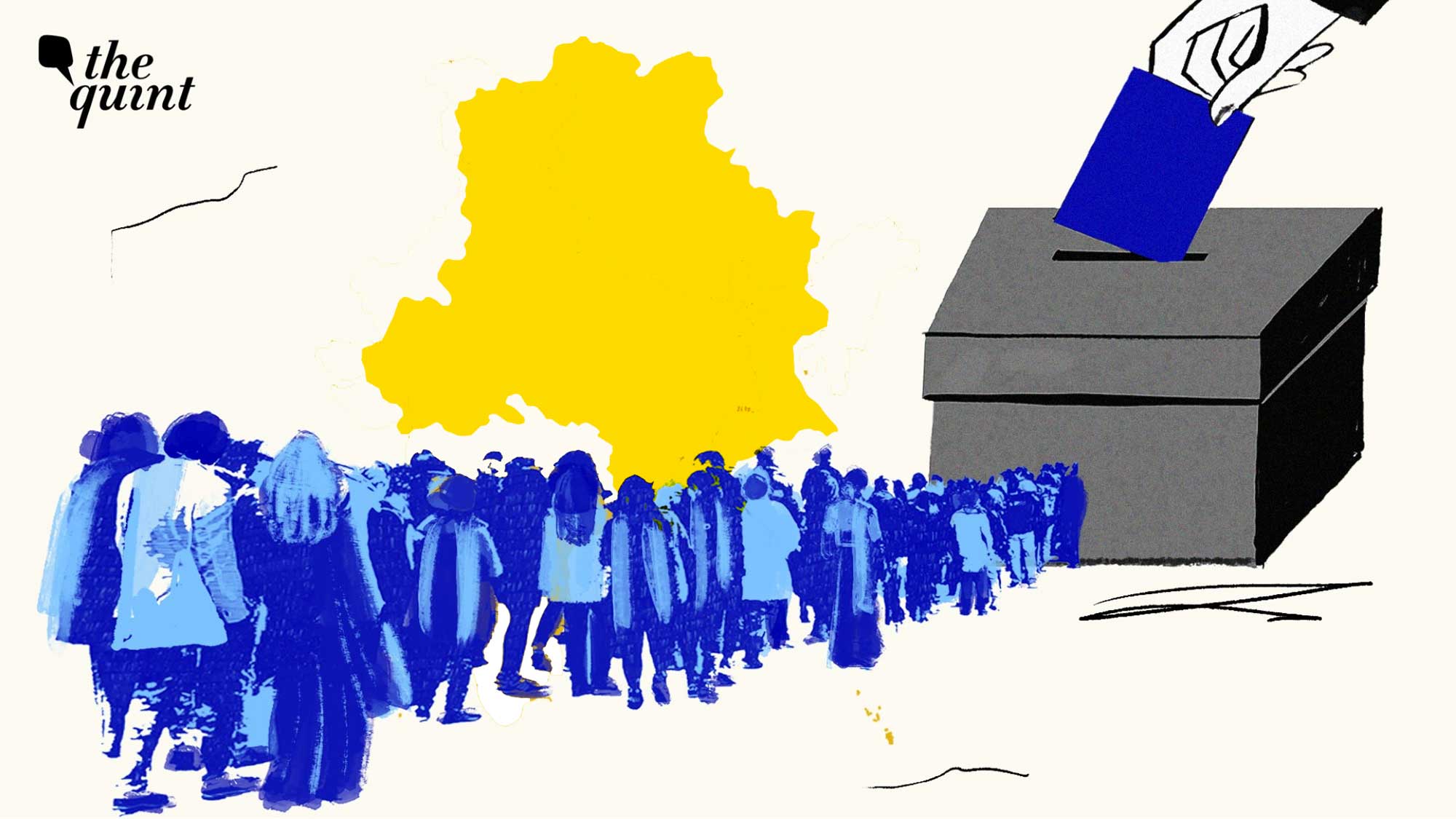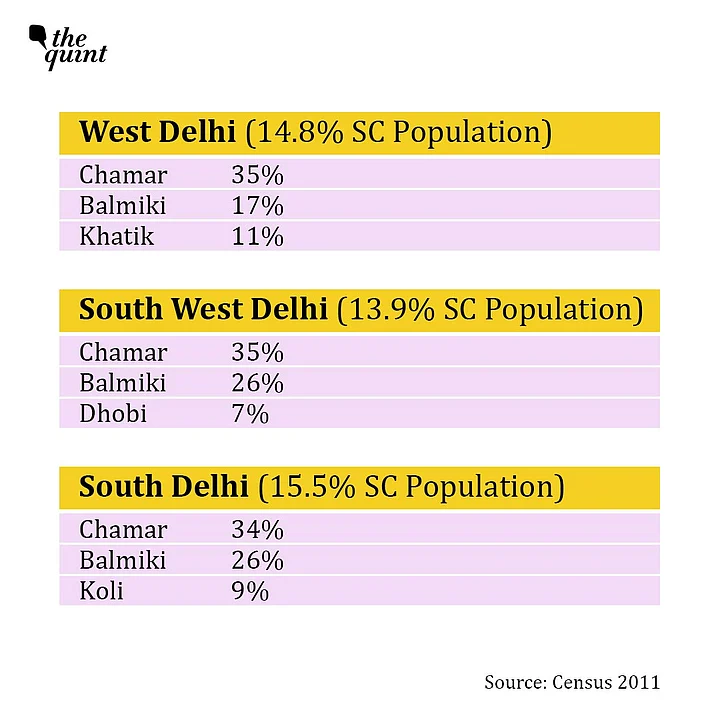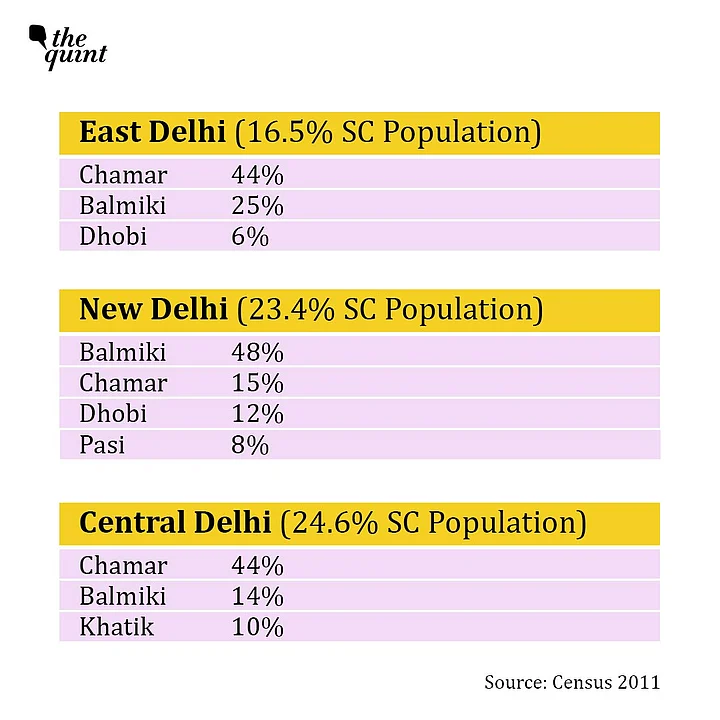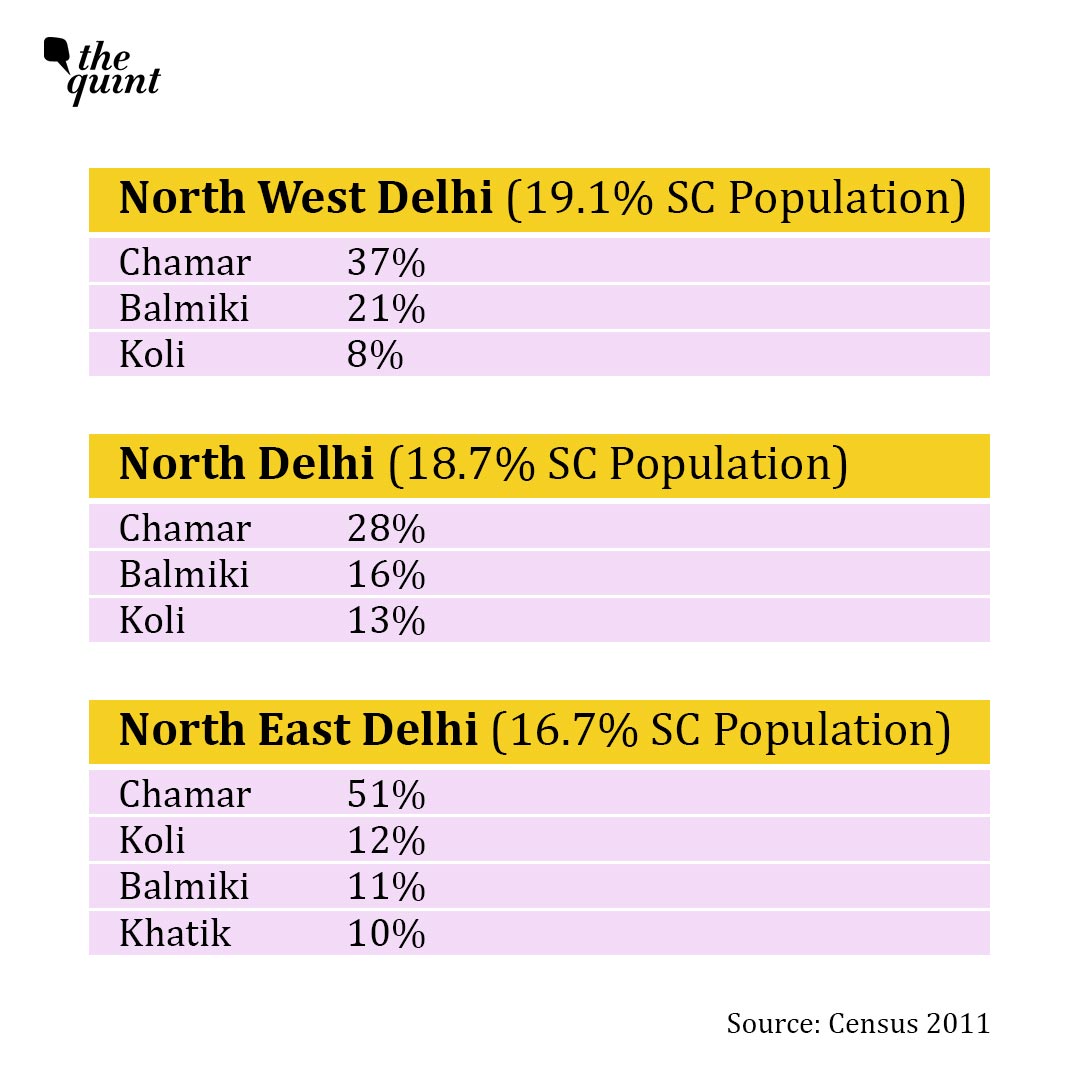Rohini and Sultanpur Majra are two adjacent seats in Northwest Delhi. Despite their geographical proximity, the two seats have had completely contrasting political trajectories. Rohini is one of BJP's strongest seats in the city, it won the seat even amid the 2015 and 2020 Aam Aadmi Party waves. On the other hand, Sultanpur Majra is a seat that the BJP has never won till date ever since Assembly elections began in Delhi in 1993.
What explains this? The answer is - caste.
Rohini happens to be one of the most Upper Caste dominated seats in the city. The Dalit population in Rohini is just 5 percent, the lowest among all the Assembly constituencies in the city. The Dalit population in Sultanpur Majra is the highest in Delhi, at 44 percent.
Dalits account for 16.5 percent of Delhi's population as per the 2011 census, making it the second biggest voting bloc after Upper Castes taken as a consolidated category. The BJP has historically been weak among Dalits, who have consolidated behind first the Congress and then AAP.
Will BJP succeed in making inroads this time? Can the Congress regain some of its traditional votes? Or will AAP maintain its hold over this section once again?
Dalits in Delhi aren't homogenous. They are divided into different castes and differ in terms of geographical concentration as well.
Mapping the Dalit Vote in Delhi
What isn't often acknowledged is that Delhi is a very Upper Caste dominated city. About 40 percent of Delhi's population are Upper Castes (not including Jats).
An element of caste segregation does exist in Delhi - there are a number of housing societies that have become almost exclusively Upper Caste, either by default or design.
For instance, East Patel Nagar and Ranjeet Nagar are heavily Upper Caste dominated, with a Dalit population of just about 10-12 percent. Barely 2-3 kilometers away lies Dev Nagar ward where Dalits account for 70 percent of the population.
Another aspect that has led to a higher concentration of Upper Castes than many other states is that fact that Upper Castes account for a major chunk of the migrants coming from areas like East UP and Bihar.
In terms of Assembly seats, there are 10 Assembly constituencies in Delhi where the Dalit population is over 25 percent, in four seats the population is over 35 percent.
This map gives an idea of the concentration of Dalits across Assembly constituencies in Delhi.
Historically, the BJP has consistently underperformed in constituencies where Dalits are present in higher numbers. In 9 out of 10 seats where the Dalit population is over 25 percent, the BJP has one only once or never.
These seats have been the bulwark for first the Congress and then AAP in Delhi.
Even when the BJP won Delhi in 1993, it lost Dalit concentration seats like Sultanpur Majra, Mangolpuri, Trilokpuri and Ambedkar Nagar. In that election, even Muslims had deserted the Congress, which was reduced to just 14 seats. Six out of these 14 seats came from seats where Dalits are over 20 percent of the population.
BJP's Deficit Among Dalits
Unlike many other states in the Hindi heartland, BJP has historically failed to win over Dalits in Delhi at least at the Assembly election level. The reason for this isn't the BJP's weakness, rather it is the reverse - it is the fact that the BJP has always been strong in Delhi.
Right from the Jan Sangh days, it has always had a strong footprint in Delhi. Soon after Independence, the Jan Sangh acquired a strong base among Punjabi refugees and traders. During the Ram Jannmabhoomi agitation it expanded among Jats and Gujjars as well. These sections on their own gave BJP a stable base of 30-35 percent and it came to be seen as a party of dominant sections, which prevented any significant expansion among Dalits.
There is also the fact that Delhi has had some history of Dalit assertion.
In this article in Forward Press, Kusum Viyogi narrates how Shahdara in Northeast Delhi emerged as an important centre for Dalit writers and intellectuals in the 1980s and 1990s.
"The Bharatiya Dalit Sahitya Manch and Bharatiya Dalit Sahitya Academy were instituted in 1984. The Dalit Lekhak Sangh (DLS) was formed in Shahdara on 15 August 1997," Viyogi writes.
He writes that Dalit organisations in Delhi are able to "launch protests that reach and involve thousands at a go from Shahdara, partly because the hub of Dalit Literature today provides them with the vocabulary and the verve, as well as the ready audience, to do so".
This culture made it difficult for the BJP to co-opt Dalits into its fold as it had done in many parts of the country following the Ram Janmabhoomi agitation.
The BSP too, has, always had a presence in Delhi. But the default beneficiaries were the Congress and later AAP. Though led by Upper Caste leaders like Sheila Dikshit and Arvind Kejriwal, the pro-poor politics of these parties helped them establish rainbow coalitions in Delhi, of which Dalits were a central part.
The BJP has in the past two elections, succeeded in winning over Dalits at the Lok Sabha election level but it has somehow failed to do so at the Assembly level. Will it succeed this time on?
The party is basing its calculations on the divisions within Dalits.
Castes Within Dalits
The BJP's win in the Haryana elections in 2024 was possible, to a great extent, due to the increased divisions within Dalits due to the sub-classification issue. This enabled BJP to pitch smaller communities against the Jatav/Chamar Dalits that are more numerous and also are relatively better off in terms of educational attainment and representation in government jobs.
In Delhi, Jatav/Chamar Dalits account for 38 percent of the total Dalit population. This is followed by Balmikis at 21 percent. Khatiks, Kolis and Dhobis are about 6-7 percent each. The graph below would give a better idea (caste names are as per what is stated in the census).
Geographically, too, various castes within Dalits are concentrated differently across Delhi.
Jatavs are nearly 50 percent of the Dalit population in East and Northeast Delhi, areas where the BJP has performed poorly among Dalits. On the other hand, in New Delhi, South Delhi and South West Delhi, Balmikis account for a much higher share of the Dalit population.
The BJP's calculation is that communities like Balmikis and Khatiks have been much more amenable to coming into the Hindutva fold compared to Jatavs, among whom Ambedkarite politics has much stronger roots.
However, so far the BJP's outreach among Balmikis in Delhi hasn't proven to be successful mainly because many within the community say they benefited due to the Congress and now AAP's populist politics. "Indira Gandhi gave us houses" was a common refrain among Balmiki voters when they were loyal voters of the Congress till 2013.
So while the BJP is trying to woo this section in the name of Hindutva and what it calls "AAP's failures", the Congress too is staking claim to its traditional base.
What's Likely to Happen This Time?
Except in some pockets in East and Northeast Delhi, that too among non-Jatav Dalits, Hindutva and communal polarisation is unlikely to benefit the BJP much among Dalits.
In the end, it will boil down to two things:
How satisfied or dissatisfied are Dalits with AAP?
Are those who are dissatisfied willing to consider the BJP or Congress as options?
No doubt after 10 years of being in power in the Delhi and two years of controlling the MCD, there is some degree of dissatisfaction against AAP, especially on issues like roads, garbage disposal etc.
However, BJP has also been in power at the Centre since 2014, by extension controlling many aspects of governance in Delhi. Therefore, it is also finding it difficult to present itself as an agent of change in the city.
A lot would depend on which party does a better job of convincing voters in the last stages of the campaign.



